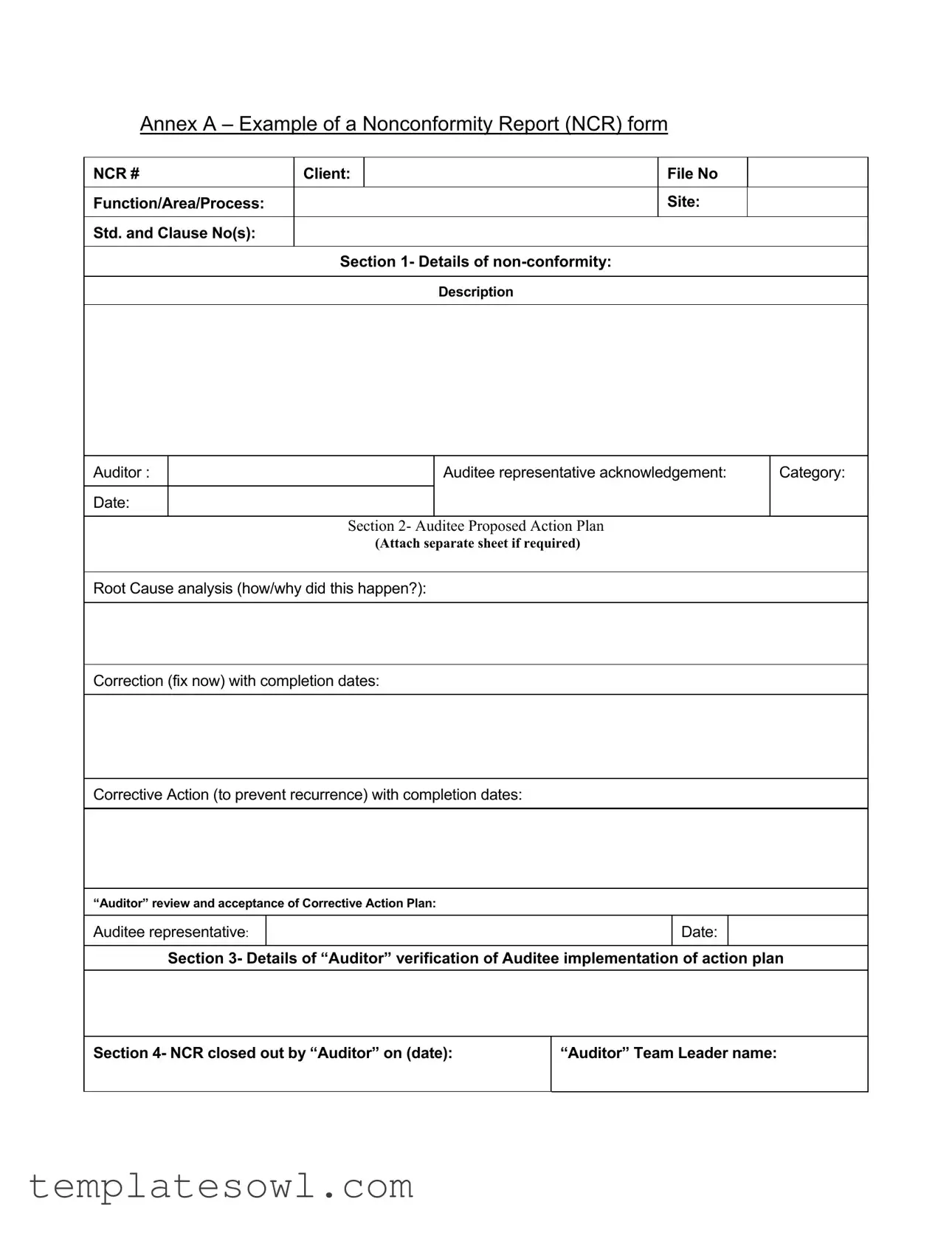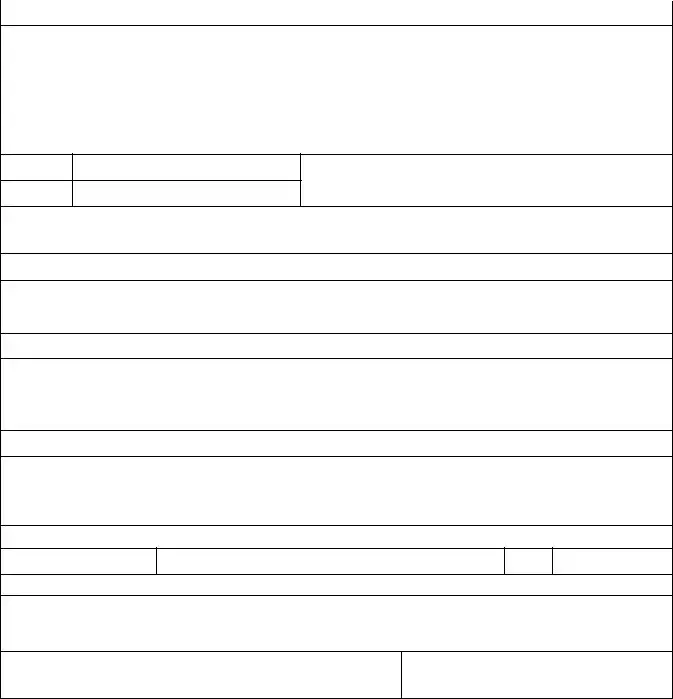What is a Nonconformity Report (NCR) form?
A Nonconformity Report (NCR) form is a document used to record instances where a product, service, or process does not meet specified standards. It captures essential information about the issue, including its description, root causes, and the proposed action plan for resolution. The form serves as a formal record to ensure accountability and facilitate improvement.
What information is required to complete the NCR form?
Completing the NCR form requires various details. Initially, it identifies the nonconformity with a clear description, along with associated factors like the auditor's name, the date, and the client's information. Furthermore, sections outlining the root cause analysis, corrective actions, and action plan implementation must be filled in to allow for thorough follow-up and resolution.
Who is responsible for filling out the NCR?
The responsibility of filling out the NCR typically lies with the auditor who identifies the nonconformity. However, collaboration with the auditee is essential. The auditee must provide details about the corrective actions taken and their effectiveness in rectifying the issues highlighted.
What is the purpose of the root cause analysis section?
The root cause analysis section is critical. It seeks to uncover the underlying reasons that led to the nonconformity. By analyzing how and why the issue occurred, organizations can prevent similar issues from arising in the future. This section serves as the foundation for developing an effective corrective action plan.
What should be included in the corrective action plan?
The corrective action plan should detail the specific actions to be taken to rectify the nonconformity. This includes immediate corrections to fix the identified problem and longer-term corrective actions aimed at preventing recurrence. Each action should also specify completion dates and responsible parties to ensure accountability.
How is the auditor involved in the NCR process?
The auditor plays a critical role throughout the NCR process. Initially, they identify and document the nonconformity. After the auditee submits their action plan, the auditor reviews and accepts that plan to ensure its adequacy. Verification of the implementation of the action plan and the closure of the NCR is also overseen by the auditor.
What are the potential outcomes after submitting the NCR form?
After submitting the NCR form, several outcomes may arise. If the auditor finds the corrective action adequate, the NCR can be marked as closed. Alternatively, if the actions are insufficient, further clarification or additional steps may be necessary. The outcome is a vital part of maintaining quality and compliance within an organization.
Is there a deadline for resolving issues highlighted in an NCR?
Typically, there is a designated time frame for resolving nonconformities outlined in the NCR form. This deadline varies based on the nature of the issue, its severity, and organizational policies. Adhering to these deadlines is essential to preserving quality standards and promoting continuous improvement.
How can organizations benefit from using NCR forms?
Utilizing NCR forms fosters a culture of accountability and continuous improvement within organizations. By documenting issues systematically, organizations can track patterns, enhance decision-making, and ultimately improve their processes. This results in higher quality products and services, bolstering customer satisfaction and trust.
What happens if nonconformities are not addressed?
Failure to address nonconformities can lead to serious consequences. Over time, unresolved issues may cause recurring problems, decrease product or service quality, and harm the organization’s reputation. Additionally, it may result in regulatory penalties or liability concerns in certain industries. Hence, addressing NCRs promptly is crucial for overall business health and compliance.

